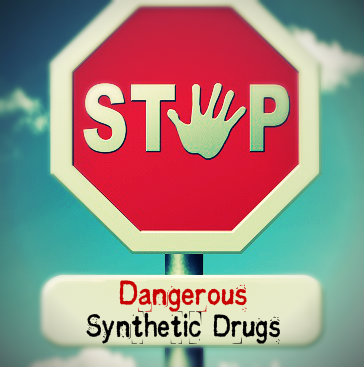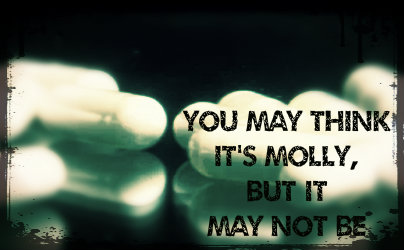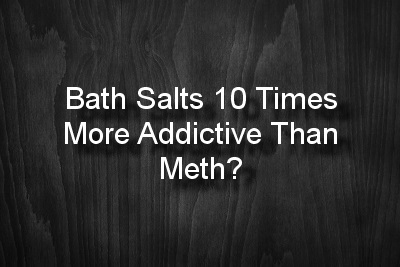25 Dec 2013
Stopping The Flow Of Dangerous Synthetic Drugs
The chemical make-up of synthetic drugs are in a continuous state of flux, means their effects aren’t predictable and correct emergency treatment can be difficult. Those in law enforcement are often handcuffed in terms of prosecution because these substances can be modified to slip through current drug laws. Now there’s a group that’s trying to tighten the net.
The National Alliance for Model State Drug Laws (NAMSDL) want to stop the proliferation of synthetic drugs, which are the second most commonly used illicit drug among young people, according to a 2012 Monitoring the Future survey. One out of every nine high school seniors reported having used synthetic drugs within the past year.
How And Why The Recipes Of Synthetic Drugs Keeps Changing
 Synthetic drugs can be either man-made marijuana (cannabinoids) or chemicals related to amphetamines (cathinones). The synthetic marijuana, often sold under the names K2 or Spice, are plant materials resembling potpourri that are sprayed with chemicals that mimic THC, the psychoactive agent in marijuana. But the recipe keeps changing in order to evade prosecution.
Synthetic drugs can be either man-made marijuana (cannabinoids) or chemicals related to amphetamines (cathinones). The synthetic marijuana, often sold under the names K2 or Spice, are plant materials resembling potpourri that are sprayed with chemicals that mimic THC, the psychoactive agent in marijuana. But the recipe keeps changing in order to evade prosecution.
In 2012 the federal government made synthetic drugs, also known as novel psychoactive drugs, illegal. But the law defines the drugs narrowly. Once those who make the drugs tweak the recipe, the new compound no longer fits within the narrow definition of synthetic drugs. To further complicate the matter, the substances are often sold as bath salts, incense or plant food with a label saying they’re not intended for human consumption.
How The Spread Of Synthetic Drugs Is Trying To Be Halted
What NAMSDL wants to do is work with state lawmakers to make classes of substances illegal, rather than specific chemical combinations. The laws could give examples of what some of those substances might look like, but would leave room so that potential new chemical compounds would be illegal. That would certainly speed things up for law enforcement that now must often wait a year and a half before each new synthetic drug compound is banned.
NAMSDL also wants to enhance communication between those who see the changing drug landscape firsthand. The Drug Enforcement Agency currently collects and disseminates drug information to concerned parties, but it’s hospital emergency rooms, poison control centers and law enforcement that sees what’s going on in real time. This would help keep the information on synthetic substances truly up-to-date
Synthetic Drug Education And Prevention
NAMSDL is working directly with the Office of National Drug Control Policy and others to create an effective education and prevention campaign aimed at informing moms, dads, emergency room staff and school administrators about what these drugs are and what they do. Education, information flow and improved legislation represent a 360 degree effort on closing the gaps and halting the flow of these dangerous drugs.
Read More About Synthetic Drugs Causing More Emergency Room Visits Than Real Drugs
17 Oct 2013
You May Think It’s Molly, But It May Not Be
Hospitals face a difficult problem whenever someone comes in to be treated for a Molly overdose. The patient may believe they’ve taken a form of ecstasy, but there is no way to know what the person actually swallowed. There is no “Truth in Labeling Law” to govern illegal drugs, and many think they’ve been using Molly when they’ve really been taking some other highly dangerous substance.

Courtesy of: www.ktsm.com
Molly is the street name for the synthetic drug MDMA. It’s called Molly because of the powder or capsule form that it comes in, as opposed to tabs, and the presumption that the “molecular,” or Molly for short, form is more pure. Synthetic drugs are also sometimes referred to as designer drugs. They are often compounds designed to mimic the effects of traditional drugs like marijuana, LSD or ecstasy, among others. Synthetic marijuana, for example, is sold as K2 or Spice.
Mislabeled And Dangerous Synthetic Designer Drugs
The problem is that you don’t know the person who designed your Molly. The Drug Enforcement Agency regularly tests the drugs it obtains through seizures. Those tests often reveal that pills are mislabeled.
Experts often find methylone in the pills, which is a key component in bath salts, another synthetic drug famous for being unpredictable and causing serious health side effects. In 2012 a man was arrested for importing methylone from China and then selling it to someone as Molly. That person died after using the drug.
Dangerous Side-Effects Of Molly
Molly is a popular drug for young people attending raves, dance clubs and concerts. The drug enhances positive emotions and feelings of bonding with others. However, Molly also increases a person’s heart rate and raises their body temperature, sometimes to extremes. One young man died with a body temperature of 109 after taking Molly. The risks of dehydration are so well known that special booths are often set up at events where Molly is expected to be used.
Symptoms commonly seen in hospitals include agitation, seizures, soaring fever and increased heartbeat. Since there is no way to know for certain what the young person actually ingested, the best hospital staff can do is to manage symptoms while they wait for the effects of the drug to wear off. Hardly reassuring.
Dying After Taking Molly
Over Labor Day weekend 2013 several young people died after taking Molly at various concert venues, with one multi-day concert in New York was shut down due to deaths. Nevertheless, rappers and rock stars continue to sing about the beauties of Molly. And young people continue to swallow whatever they are being told by their idols.
To Read More About Molly’s Dangerous Side-effects On Teens – Click Here
Of all of the recent designer drugs that have hit the market, few have attracted the level of attention as bath salts. The drugs were initially blamed for the zombie-like, cannibalistic attack in Florida last year, but it was later found that marijuana was the only drug in the attacker’s system. Regardless, the addictiveness of bath salts and the risks associated with their use have become more well-known, leading to a U.S. ban of many of the drugs. Their potency, however, has meant that many users still take them and expose themselves to these risks. They might not turn users into cannibals, but new research suggests that the drugs are actually much more addictive than methamphetamines.
What Are Bath Salts?
They definitely aren’t chemicals you use when you take a bath—they’re just marketed as such in order to make legal punishment more difficult to rain down on the producers. Bath salts are essentially stimulant drugs that have comparable effects to amphetamines and MDMA. In essence, there are several different types of bath salts, and they can be more accurately described as synthetic cathinone compounds—like the active substance in the drug khat. You can’t really know which chemicals are in the substance you’re taking.
There are many risks associated with the drug, with reports of chest pain, rapid heartbeat, aggressive behavior, hallucinations, delusions, paranoia and high blood pressure. Studies on the substances are limited, however, because they’re relatively new, and it’s merely assumed that the long-term effects are comparable to those of methamphetamines because of the chemical similarities. In 2012, there were more than 2,600 calls to poison control centers about exposure to bath salts.
Studies on the substances are limited, however, because they’re relatively new, and it’s merely assumed that the long-term effects are comparable to those of methamphetamines because of the chemical similarities. In 2012, there were more than 2,600 calls to poison control centers about exposure to bath salts.
The Study
These issues (and the relative scarcity of studies addressing the drugs) led some researchers to look at one specific cathinone compound, 3, 4-methylenedioxypyrovalerone—or simply MDPV. The researchers used rats—which have similar neurological “reward” pathways to humans and are therefore useful for studying addiction—that had been trained to press a lever for a reward. They initially received food for their lever-presses, but the researchers had them hooked up to an intravenous infusion of drugs, which became activated for the study period. The rats received MDPV or methamphetamine, with the aim of investigating the differing effects of both drugs.
The Findings
The most shocking result from the research is the finding that the rats who were hooked up to the MDPV pressed the lever for a dose significantly more often than those who had methamphetamine. The researchers point out that the number of lever-presses is analogous to the amount of effort the rats are willing to put in to get a dose of the drug. The rats pressed the lever an average of 60 times to get access to meth, whereas for MDPV the number was 10 times higher, at an average of 600 presses. The results seem to show that bath salts are exponentially more addictive than methamphetamine, with some rats pressing the lever up to 3,000 times for a single dose.
Additionally, the researchers also looked at the repetitive behaviors that are common in humans who take bath salts. They found that the rats receiving higher doses of MDPV displayed many similar behaviors, such as excessive licking, skin-picking and teeth-grinding. The researchers reported that some of the MDPV-dosed rats were so intent on licking the transparent walls of their cages that they were unable to interrupt them.
Conclusion
These findings serve as evidence that bath salts could be notably more addictive than meth, according to the researchers, and they concluded that the potency of the drug means that it’s likely to stick around despite its now illegal status. In other words, the study suggests that bath salts are so addictive that they may join the ranks of commonly abused illegal drugs, rather than being replaced by another temporarily legal designer drug.
Of course, the major problem when it comes to bath salts is in the wide variety of substances and the fact that long-term studies are currently unavailable. The researchers are moving on to both of these areas for future studies and plan to investigate the long-term behavioral impacts of bath salt abuse and the different effects of the newly produced cathinone drugs. The story comes as a stark reminder that legality doesn’t equal safety when it comes to drugs—in fact, the changes made to their chemical structures in order to skirt existing legislation could make them even more dangerous. Bath salts are particularly susceptible to this, because there isn’t one “formula” for the drug—one batch could be drastically, fatally different from another and the user would have no way of knowing.
14 Mar 2013
Up-to-Date Information on Synthetic Cathinones
Synthetic cathinones are a group of amphetamine-like chemicals based on cathinone, a mind-altering substance found in the plant species Catha edulis. In recent years, these chemicals have entered mainstream conversation as the active ingredients in the euphemistically named, illegal drugs called “bath salts.” In addition, certain legal prescription drugs -including the antidepressant, anti-smoking medication buproprion (Wellbutrin, Zyban) – also belong to the synthetic cathinone family. Because of the relative newness of “bath salts,” no one knows for sure what types of damage long-term abuse of most synthetic cathinones will produce in the body. However, doctors and researchers have documented many of the potential consequences of short-term abuse of these drugs.
Read More
Bath Salts are presenting quite a challenge for doctors and drug rehab specialists in the Utica, NY area, according to a recent article. Bath salts have only been around since late in 2010 and are presenting some unique situations for drug rehab staff, EMTs and doctors simply because they are so new.
Read More
Poison control centers are fielding a record number of calls about “bath salts” while the Federal government efforts to ban the chemicals have been halted. In 2011, nearly 7,000 people called in to poison control centers with emergencies related to this synthetic marijuana. That was more than double the number from the previous year.
Read More
Poison control centers in the United States saw a twenty-fold increase in the number of people calling them about bath salt poisoning last year. Police and hospital personnel are reporting similarly large increases in bizarre incidents of people abusing bath salts as hallucinatory drugs.
Read More
28 Jul 2011
The Dangerous Addiction to Bath Salts
Today, bath salts are no longer being used as a way to relax and moisturize your skin, instead they are being abused and used as a drug. This new addiction, derived as a stimulant, is raising a lot of concern within medical circles.
This new trend in drug addictions is somewhat different than others, in the sense that bath salt is being used as a recreational drug. Bath salts can come as either a powder or crystal, and they are used for snorting, injecting or smoking. In the months from January to June, poison control centers located across the country have received approximately 3,470 calls related to the bath salt drug.
Rather than a calm high, bath salts are leaving their addicts violent, outraged and psychotic. They are becoming so demented that sedatives are failing to work, and a team of doctors is being required to hold down and treat the addicts.
Since bath salts have become such a dangerous drug, many states are beginning the banning process, in hope to get rid of the drug all together. So far, 28 states have banned bath salts, most including states in the south and Midwest. Northern states such as Maine, New Jersey and New York are also jumping on the bandwagon.
A special task force in New York took matters into their own hands last month. The drug agency sent undercover agents to bath stores to buy the bath salts from distributors in the Manhattan and Brooklyn areas. What they found was that the clerks were even advertising how to ingest the drug and even made comments about how it would not show up on a drug test.
What exactly is it that makes bath salts dangerously addictive? Bath salts are compromised of multiple chemicals that are manufactured, such as mephedrone and methylenedioxypyrovalerone (MDPV). Both of these are related to the drug khat, which is an illegal stimulant, found in East African countries and Arab. These drugs also distinguish characteristics that are found in synthetic marijuana, which is also a dangerous drug looking to be banned.
While steps are being taken to prevent the abuse of bath salts, the issue isn’t going to fade anytime soon. Bath salts are still easily for sale and can be bought at any age. The average price is $20-$50 depending on the amount in the container. This means even a 12 year-old has the ability to buy this drug and get a high off of it. This is a bigger problem than many people are willing to believe and fortunately, the matter is not being ignored.


